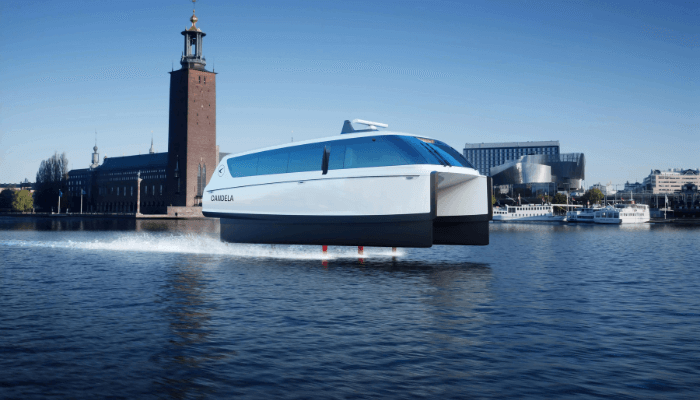The Fastest Electric Vessel In The World Is About To Take Flight On Stockholm’s Waterways
August 11, 2022 Maritime Safety News
The quickest electrical ship of the world is prepared to set sail in Stockholm subsequent a year, slicing commuting occasions between some of the archipelagos in half.
The Candela P-12 is a “flying ferry” that has the capacity to host 30 passengers. The vessel has the ability to attain speeds of 30 knots. Even higher, the vessel is alleged to be the most energy efficient.
Candela has loved funding and aid from authorities in Sweden, with the agency collaborating with Stockholm for a nine-month passenger trial in the coming year.
The vessel boasts three carbon-fiber wings or hydrofoils, which allow it to rise out of the water when going at speeds beyond 18 knots.
As soon as airborne, the P-12 will be capable to have excessive speeds and journey lengthy distances owing to vital discounts in drag that come with flying above the water.
Candela’s technology is designed to lower energy per passenger kilometer by 95% compared to that of current vessels. The company has to say that the ship is going to be more energy efficient than even a hybrid bus. Besides, it will be able to recharge batteries in only an hour.
Candela collaborated with the Swedish National Traffic Agency, which has funded almost half of the vessel, with the firm funding the remaining half.

Slashing commuter times and environmental impacts
Stockholm is the ideal launch pad for P-12 owing to its multiple archipelagos and exclusive waterways. The City of Stockholm and Candela plan on deploying the vessel to connect the evolving suburb of Ekerö as well as the city center.
Residents of Ekerö residents have to take an almost one-hour trip via buses, subways, or conventional ferries. The Candela P-12 Shuttle is expected to cover the 15km route in about 25 minutes, saving almost 50 minutes daily.
The P-12’s flying abilities and lack of wake have permitted it to gain exemptions from Stockholm’s 12-knot river speed limit.
The near-zero wake is going to prevent wave impairment to sensitive shorelines, the environment, and other vessels, with P-12 producing less wake when at throttle than a traditional passenger vessel traveling at slow speeds.
As an added advantage, seasickness should not be an issue for P-12 passengers. Thanks to the computerized flight controller of the boat, its hydrofoils will get auto-adjusted up to 100 times every second to ensure that the ferry’s flying level is maintained.
How Stockholm aims to make maritime travel more mainstream
Maritime traffic is Stockholm’s most popular mode of public transport, but it is served by a fleet of more than 70 inefficient diesel-operated boats.
Gustav Hemming, VP of Regional Executive Board in Stockholm, responsible for sea-bound public transport, refers to the P-12 as a path breaker compared to the existing options. He mentions that the requirement is for new technology that’s more useful for commuter ferries
The City of Stockholm’s County Council is keen to help as it decided on playing a more active role in supporting and testing new public transport technologies.
Candela has to say that in Stockholm, passenger vessels have on average a 17% occupancy rate indicating that a 300-passenger vessel carries 50 people mostly.
They believe that the smaller vessels operating on more frequent schedules will be able to better serve residents than these larger ones that depart less often.
On the Stockholm-Ekerö channel, Candela proposes to replace the pair of 200-person diesel vessels with five P-12 Shuttles. Instead of two departures daily, there would be a P-12 Shuttle that sets sail every 11 minutes.
Candela predicts that the plan is likely to result in a 60% reduction in costs compared to the current vessels, even though it claims that this is a conservative estimate.
Mikael Mahlberg, Candela’s head of communications, mentions that national and local politicians have championed the assignment.
He observes the irony that waterways are the oldest infrastructure in several cities, yet they are not being used effectively now, something he strongly believes that his firm can transform.
Could other countries get ‘flying ferries’?
While the P-12 will make its debut in Stockholm, it has plans to produce hundreds of vessels each year for international distribution.
Candela says more than 600 cities, vessel operators, municipalities, and urban developers have expressed interest in the shuttle.
While converting interests to orders is the ultimate test, the P-12 may bring about a green revolution in the world of maritime commuter travel.
The P-12’s green credentials are expected to be clearer if more places follow Stockholm in powering vessels from renewable sources.
References: Euronews, CompleteTips 24 h, Archynetys





